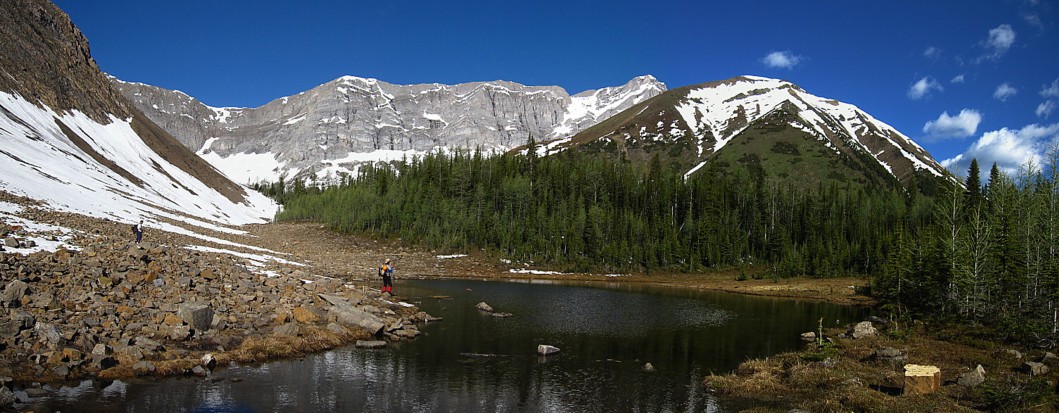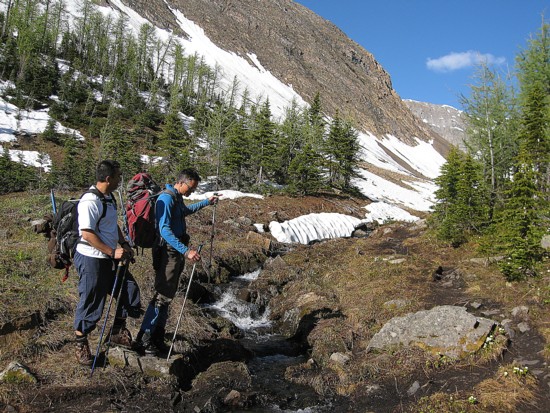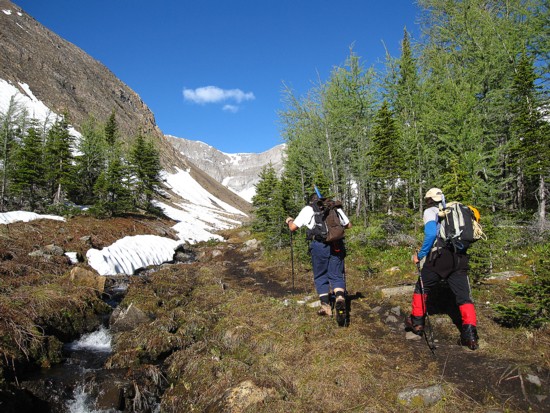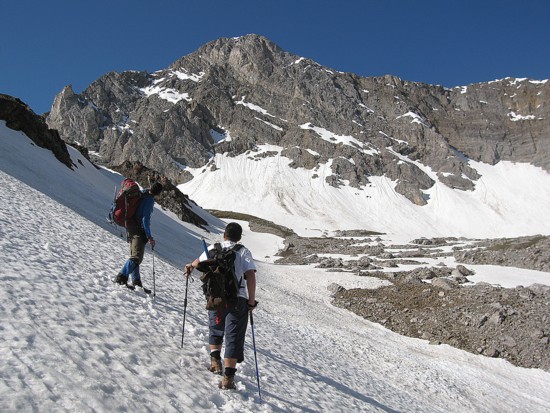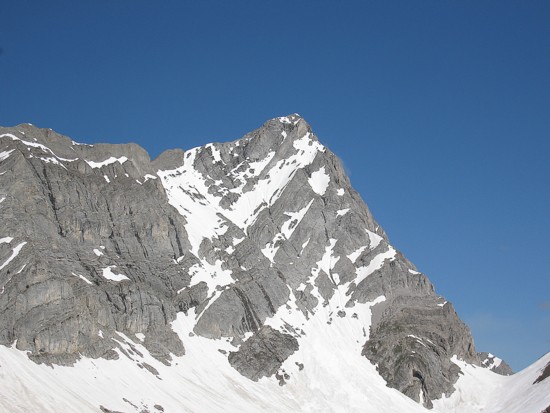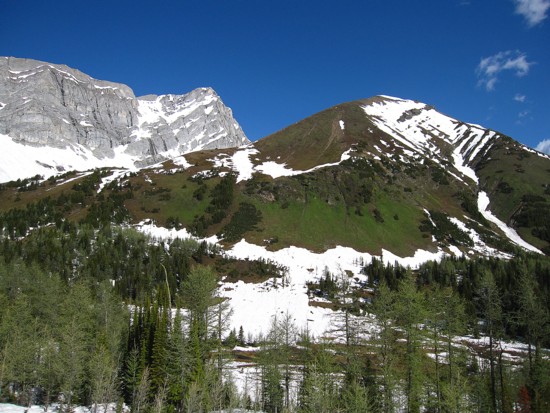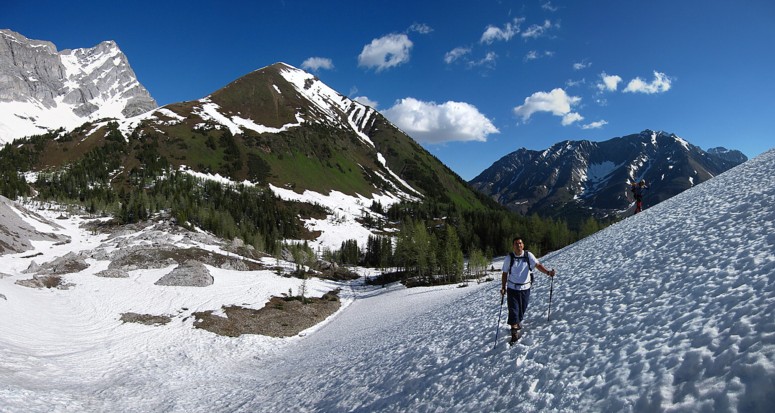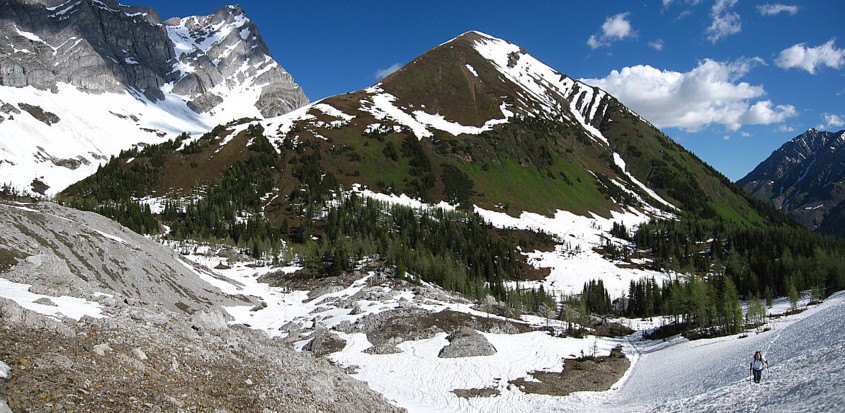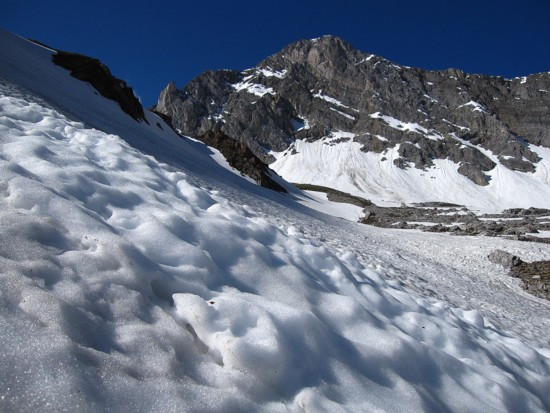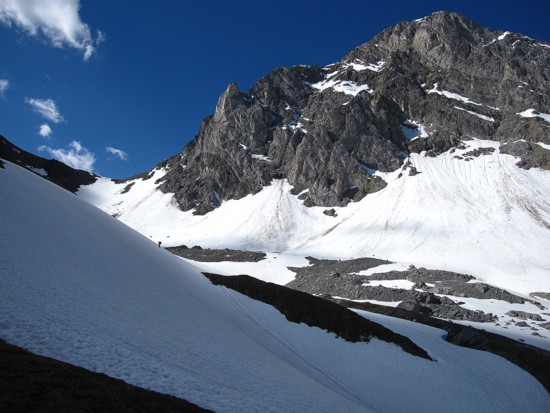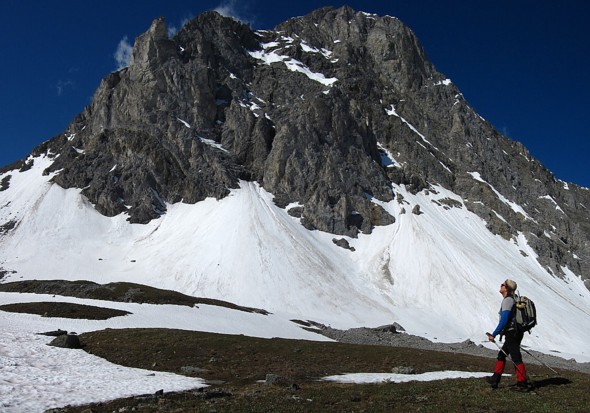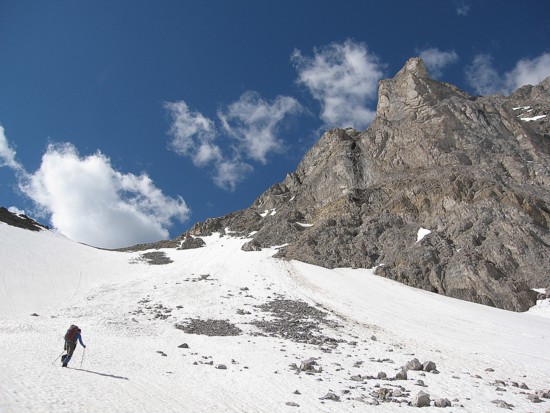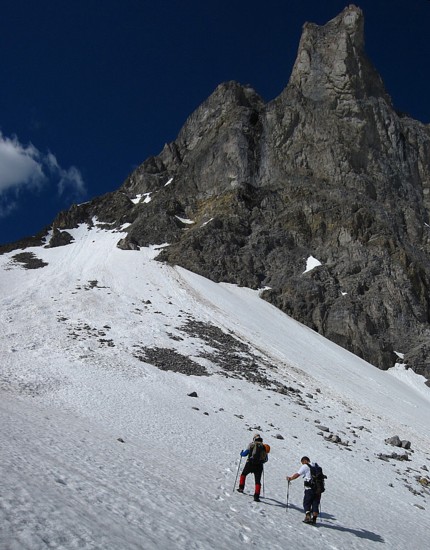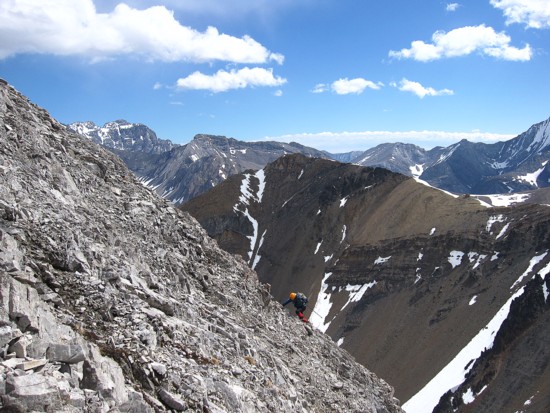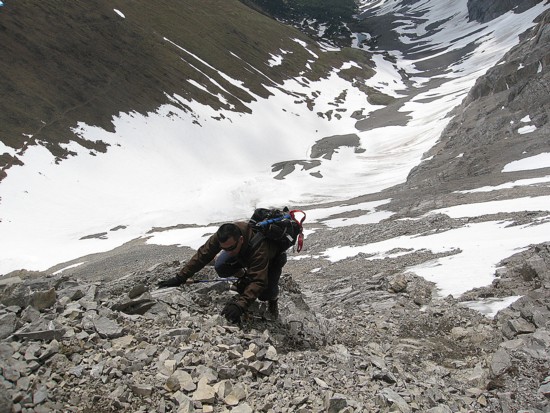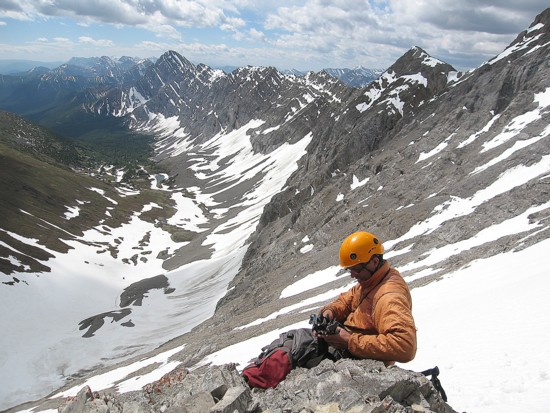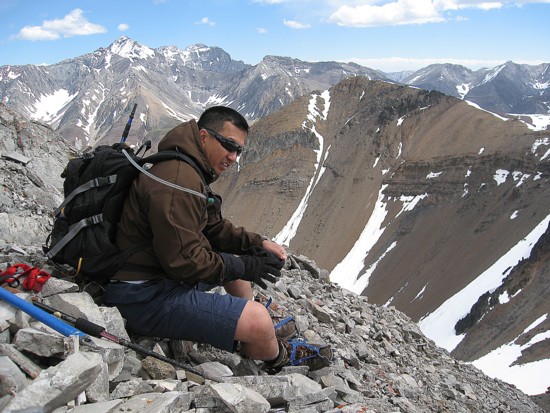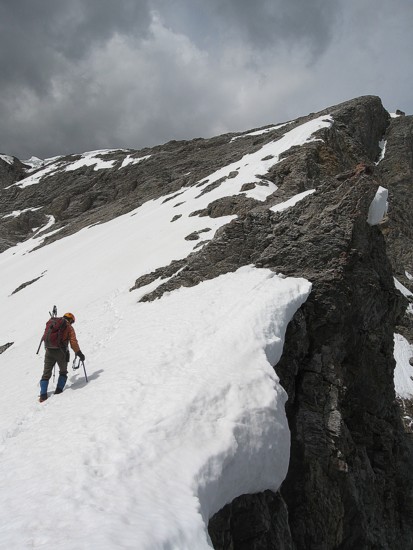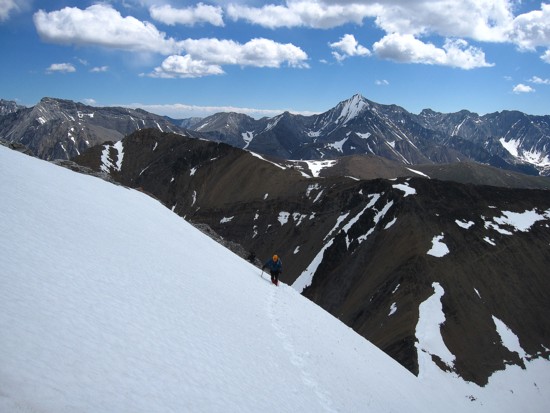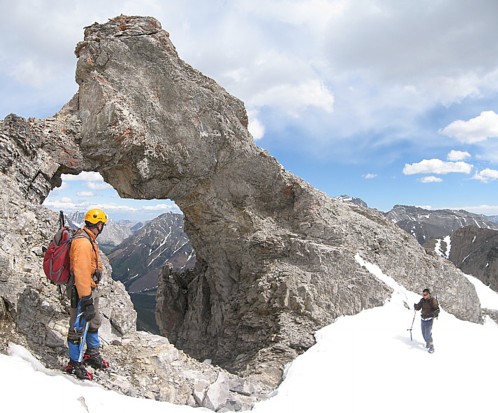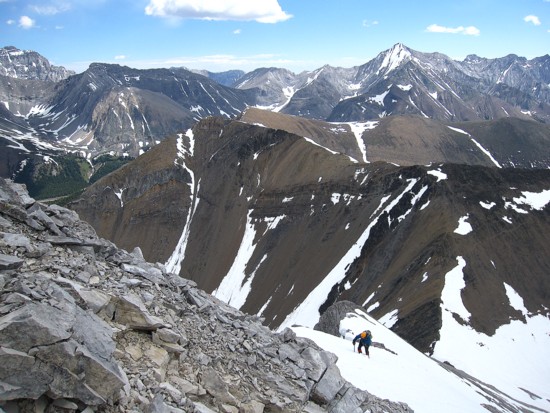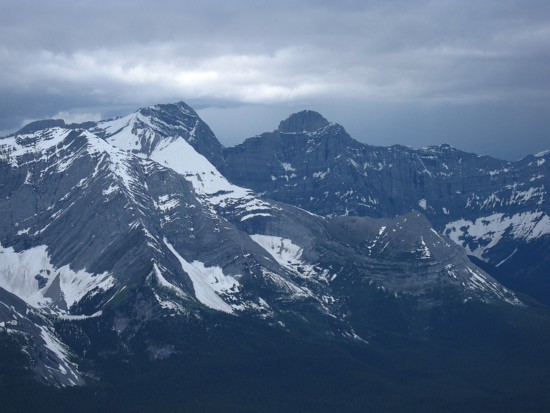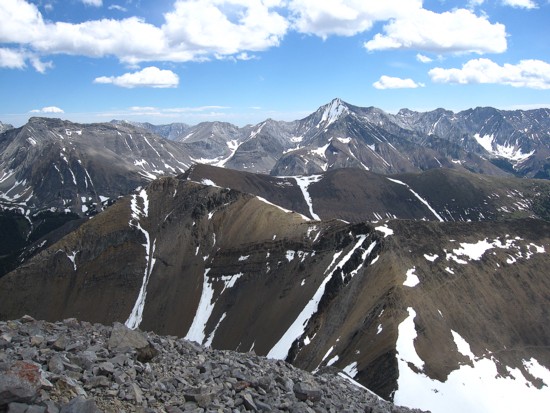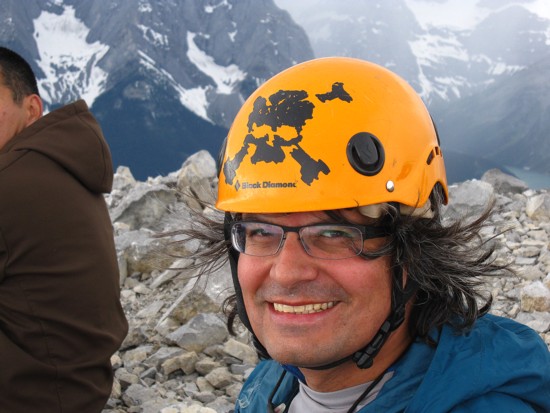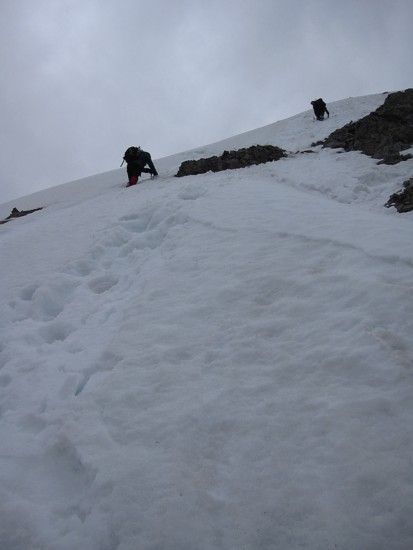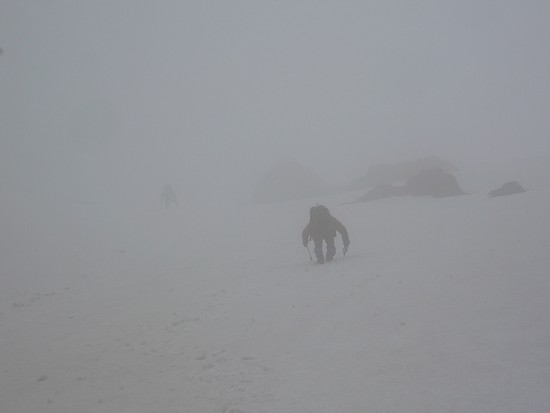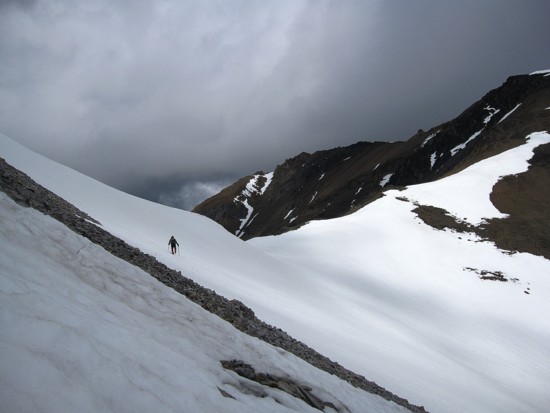

Mount Tyrwhitt IV

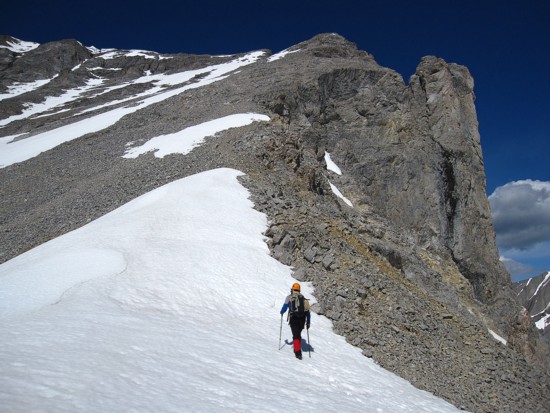
July
3, 2011
Mountain
height: 2875 m
Elevation gain:
650 m
Round-trip time: 8:10
Scrambling
and mountaineering with Mark and Holland.
To quote a far too often used cliche, “expecting the unexpected” in the mountains is part of the experience. Nature is unpredictable - period - despite humanities best efforts to forecast the future.
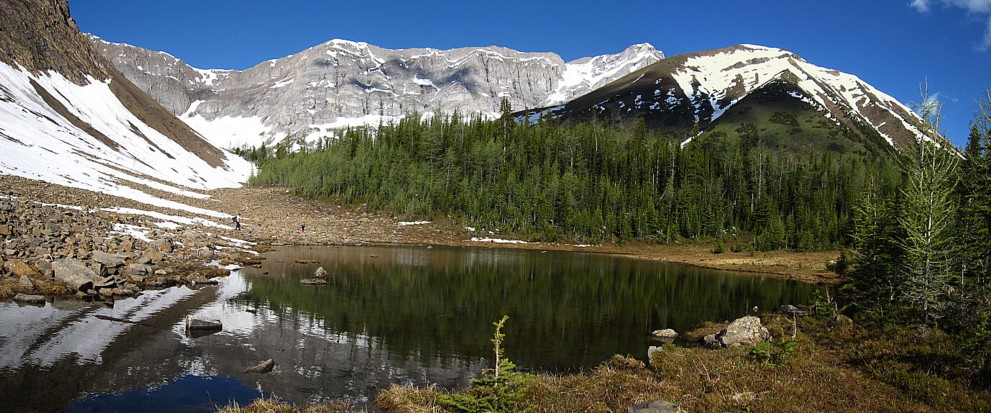
Armed
with a near perfect weather forecast and all kinds of climbing gear, we
set out
to the Highwood area to pick an objective. Upon arriving, the east face
of
Mount Pocaterra sounded like a great idea, however, I had not brought a
route description
with me. A good friend told me this route was possible and I recalled
that
Sonny Bou had done the ascent. We
therefore decided if the specific route became obvious we would try it;
if not
then Tyrwhitt was a guaranteed alternative.
The
hike into Pocaterra Cirque was absolutely magnificent, courtesy of an
immaculate blue sky, lots of remaining pure white spring snow, the
rejuvenated
green of the foliage and trees, and the pleasant contrast of Mount
Pocaterra’s
light gray limestone with the brown shale of Pocaterra Ridge. Mountain
scenery
simply doesn’t get much better than that!
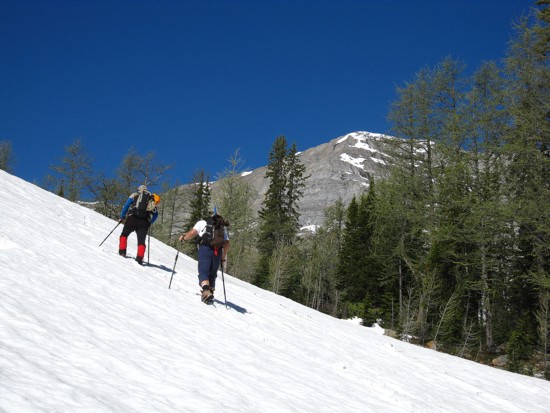 Close
inspection of Pocaterra’s east face failed to reveal an easy route up,
perhaps
because of the large amount of snow remaining on the face, and so we
opted for
Tyrwhitt, reserving the possibility of the high level traverse to
Pocaterra.
Close
inspection of Pocaterra’s east face failed to reveal an easy route up,
perhaps
because of the large amount of snow remaining on the face, and so we
opted for
Tyrwhitt, reserving the possibility of the high level traverse to
Pocaterra.
Although
I had completed this ascent three times previously, the scenery was as
utterly
breath-taking as I had ever seen it and continued to impress as we
gained the
col below Tyrwhitt’s east ridge. Only the slight build-up of clouds to
the west
put a damper on things.
As
we
started up, a lone (and very speedy) scrambler passed us. The ascent to
the
famous arch was fairly straightforward on loose rubble and scree.
 Again, the
unexpected cloudy conditions warranted a few grunts of displeasure. By
the time
we reached the arch, the lone scrambler had already visited the summit
and was
on his way down. He informed us the ascent was easy, but ice axes were
definitely required. Rarely to be one concerned about overkill, we
strapped on
the crampons too, as an extra precaution and I’m very glad we did.
Terrain from
the arch to near the summit was snow covered and considerably more
challenging
than on my previous three ascents. Holland handled the axe and crampons
very
well.
Again, the
unexpected cloudy conditions warranted a few grunts of displeasure. By
the time
we reached the arch, the lone scrambler had already visited the summit
and was
on his way down. He informed us the ascent was easy, but ice axes were
definitely required. Rarely to be one concerned about overkill, we
strapped on
the crampons too, as an extra precaution and I’m very glad we did.
Terrain from
the arch to near the summit was snow covered and considerably more
challenging
than on my previous three ascents. Holland handled the axe and crampons
very
well.
The
view from the summit was not what we were expecting (given the near
perfect
forecast, that is!). Trouble was definitely brewing to the west and
north, in
the forms of some major precipitation and/or thunderstorms. It took
only a few
minutes for nature’s decision to be made perfectly clear to us. At
first our
axes started buzzing and Mark’s longish hair became sufficiently
electrically
charged to diverge significantly from his head. Having experienced this
phenomena several times, Mark and I were a little concerned, but not
exactly
panicked (yet!). Holland, unfamiliar with thrill of becoming a human
lightning
rod, had a far more serious look on his face. He was right to have that
look!
Upon
standing up to evaluate the status of the storm, I received several
electrical
shocks to my head. As well as being somewhat painful, this was terribly
unnerving and I hit the deck immediately.  Mark, busy making an
interesting
movie where his hand would start buzzing when he raised it, then stood
up and
experienced the same thing – he also hit the deck pretty darn fast. Now
it was
time to panic!
Mark, busy making an
interesting
movie where his hand would start buzzing when he raised it, then stood
up and
experienced the same thing – he also hit the deck pretty darn fast. Now
it was
time to panic!
We
immediately started crab-crawling down the mountain (standing up was
obviously
out of the question), leaving everything at the summit. That was our
second
mistake (the first being, not retreating as soon as we heard our axes
buzzing). Instead
of leaving everything, we should have taken our ice axes, since they
were
absolutely essential in getting us down the mountain, and contrary to
popular
belief small, metal objects do not attract lightning – they simply
conduct it.
Down
at a slightly safer elevation, we really had no choice but to wait out
the
storm. Descending the snow slopes without axes would have been very
dangerous.
Luckily, we didn’t have to wait long. Like most storms it quickly blew
over,
whereupon we rushed back up to the summit, retrieved our backpacks and
equipment and started down again.
Although
the thunderstorm went on its merry way, the unpredictable weather
continued
throughout the descent. White-out conditions reduced visibility to
around 50 m,
making for some interesting route-finding. We took a slightly different
route
down, staying on the snow until level with the col. With axes and
crampons it
was the easiest and fastest way down. The remainder of the descent went
fairly
smoothly, save for a slight unplanned detour near the end, where we
ended up
following someone else’s tracks that went the wrong way.


